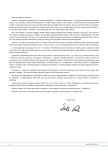TESTOSTERONE REPLACEMENT THERAPY AFTER PROSTATE CANCER: THE EMERGENCE OF A NEW CONCEPT IN CURRENT UROLOGIC PRACTICE
Authors:
R. M. Coward; C. Culley; III. C. Carson
Authors‘ workplace:
Chapel Hill, NC 27599-7235, USA
; Physicians Office Bldg
Published in:
Urol List 2010; 8(4): 32-34
Overview
Previously considered to be completely unsafe, the topic of testosterone replacement therapy after prostate cancer treatment has recently received increasing attention as a viable treatment for testosterone deficiency syndrome diagnosed after successful treatment for prostate cancer. There are now several case series in the literature of men treated with prostatectomy, brachytherapy, and external beam radiation that have been safely treated with testosterone replacement, and the paradigm is shifting as our knowledge of androgen physiology grows. The current understanding of testosterone physiology indicates that prostate cancer does not have an increased growth rate with testosterone levels in the normal physiologic range. A recently reevaluated Saturation Model of androgen to androgen receptor binding sites explains how the change in prostate cancer growth rate only occurs at or below the castrate level of serum testosterone. There is also new evidence that, compared with higher testosterone levels, hypogonadism is of more significant concern secondary to its association with worrisome features of prostate cancer. No randomized controlled trials are available to date, although the latest available data support testosterone replacement after prostate cancer treatment as a safe treatment, with minimal to no risk of prostate cancer recurrence or progression.
KEY WORDS:
testosterone replacement therapy - hypogonadism - prostate cancer
Sources
1. Huggins C, Hodges CV. Studies on prostatic cancer: I. The effect of castration, of estrogen and of androgen injection on serum phosphatases in metastatic carcinoma of the prostate. Cancer Res 1941; 1 : 293.
2. American Association of Clinical Endocrinologists. American Association of Clinical Endocrinologists medical guidelines for clinical practice for the evaluation and treatment of hypogonadism in adult male patients – 2002 update. Endocr Pract 2002; 8(6): 439–456.
3. Bhasin S, Cunningham GR, Hayes FJ et al. Testosterone therapy in adult men with androgen deficiency syndromes: an Endocrine Society Clinical Practice Guideline. J Clin Endocrinol Metab 2006; 91(6): 1995–2010.
4. Morgentaler A, Traish AM. Shifting the paradigm of testosterone and prostate cancer: the saturation model and the limits of androgen-dependent growth. Eur Urol 2009; 55(2): 310–320.
5. Cooper CS, Perry PJ, Sparks AE et al. Effect of exogenous testosterone on prostate volume, serum and semen prostate specific antigen levels in healthy young men. J Urol 1998; 159(2): 441–443.
6. Bhasin S, Storer TW, Berman N et al. The effects of supraphysiologic doses of testosterone on muscle size and strength in normal men. N Engl J Med 1996; 335(1): 1–7.
7. Bhasin S, Singh AB, Mac RP et al. Managing the risks of prostate disease during testosterone replacement therapy in older men: recommendations for a standardized monitoring plan. J Androl 2003; 24(3): 299–311.
8. Rhoden EL, Morgentaler A. Influence of demographic factors and biochemical characteristics on the prostate-specific antigen (PSA) response to testosterone replacement therapy. Int J Impot Res 2006; 18(2): 201–205.
9. Wang C, Cunningham G, Dobs A et al. Long-term testosterone gel (AndroGel) treatment maintains beneficial effects on sexual function and mood, lean and fat mass, and bone mineral density in hypogonadal men. J Clin Endocrinol Metab 2004; 89(5): 2085–2098.
10. Calof OM, Singh AB, Lee ML et al. Adverse events associated with testosterone replacement in middle-aged and older men: a meta-analysis of randomized, placebo-controlled trials. J Gerontol A Biol Sci Med Sci 2005; 60(11): 1451–1457.
11. Coward RM, Simhan J, Carson CC. Prostate-specific antigen changes and prostate cancer in hypogonadal men treated with testosterone replacement therapy. BJU Int 2009; 103(9): 1179–1183.
12. Khera M, Grober ED, Najari B et al. Testosterone replacement therapy following radical prostatectomy. J Sex Med 2009; 6(4): 1165–1170.
13. Kaufman JM, Graydon RJ. Androgen replacement after curative radical prostatectomy for prostate cancer in hypogonadal men. J Urol 2004; 172(3): 920–922.
14. Agarwal PK, Oefelein MG. Testosterone replacement therapy after primary treatment for prostate cancer. J Urol 2005; 173 : 533.
15. Nabulsi O, Tal R, Gotto G et al. Outcomes analysis of testosterone supplementation in hypogonadal men following radical prostatectomy. J Urol 2008; 179 : 406.
16. Davila HH, Arison CN, Hall MK et al. Analysis of the PSA response after testosterone supplementation in patients who have previously received management for their localized prostate cancer. J Urol 2008; 179 : 428.
17. Sarosdy MF. Testosterone replacement for hypogonadism after treatment of early prostate cancer with brachytherapy. Cancer 2007; 109(3): 536–541.
18. Yamamoto S, Yonese J, Kawakami S et al. Preoperative serum testosterone level as an independent predictor of treatment failure following radical prostatectomy. Eur Urol 2007; 52(3): 696–701.
19. Platz EA, Leitzmann MF, Rifai N et al. Sex steroid hormones and the androgen receptor gene CAG repeat and subsequent risk of prostate cancer in the prostate-specific antigen era. Cancer Epidemiol Biomarkers Prev 2005; 14(5): 1262–1269.
20. Morgentaler A, Rhoden EL. Prevalence of prostate cancer among hypogonadal men with prostate-specific antigen of 4.0 ng/ml or less. Urology 2006; 68 : 1263–1267.
Labels
Paediatric urologist UrologyArticle was published in
Urological Journal

2010 Issue 4
Most read in this issue
- WHAT IS CONSIDERED EROTIC IN NONVERBAL COMMUNICATION
- TREATMENT OF LOCOREGIONAL DISEASE IN PATIENTS WITH PENIS CARCINOMA
- TESTOSTERONE REPLACEMENT THERAPY AFTER PROSTATE CANCER: THE EMERGENCE OF A NEW CONCEPT IN CURRENT UROLOGIC PRACTICE
- THE MODERN ENDOCRINE EVALUATION OF THE INFERTILE MALE
